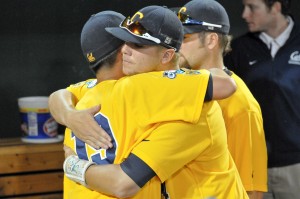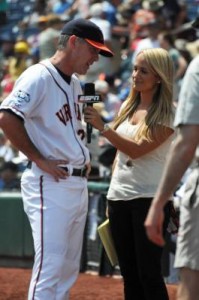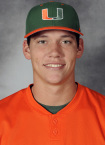Some Things I’m Thinking About….
By College Baseball 360 Editor Sean Stires
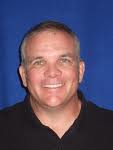 February is almost over, and that means just one thing to college baseball coaches, players and fans alike – it’s ping time! The season starts tomorrow and every team in the country, with maybe the exception of Arizona State (see below), starts with a clean slate.
February is almost over, and that means just one thing to college baseball coaches, players and fans alike – it’s ping time! The season starts tomorrow and every team in the country, with maybe the exception of Arizona State (see below), starts with a clean slate.
Teams from Connecticut to Cal, Michigan (State if you prefer) to Miami, Oregon to Orlando (with both Stetson and UCF nearby), Tennessee to Texas, and nearly 300 points in between all have their sights set on Omaha.
South Carolina is the two-time defending champ, but a stocked Florida team is the unanimous No. 1 and wants to dethrone its SEC rival. Plenty of other non-SEC teams like Stanford, North Carolina and Texas A&M to name a few are all legitimate preseason threats to the Gamecock throne.
Before they get to the promised land though, they all have to navigate their own 56-game regular season gauntlets along the road to Omaha.
Most of them, like Arkansas-Little Rock and New Mexico last year, won’t have the regular season credentials for even the NCAA field of 64, but they’ll get their shot if they can roll the dice hard and come-up big with a postseason conference tournament title and the automatic NCAA bid that comes with it.
Who will be this season’s Jeremy Lin – the team or player to come out of nowhere – and who will be this year’s Philadelphia Eagles – the team with all the preseason hype only to fall flat – ?
They’re all out there, we just don’t know who they are yet.
We’re thinking about all that and a lot more heading into 2012. Here’s a look at some of the other stuff on my own mind:
Let’s Start With Exposure
 College baseball needs a dose of early season exposure. Pitchers and catchers are just starting to think about reporting to Spring Training, but the college game is starting en-masse this weekend – IN FEBRUARY.
College baseball needs a dose of early season exposure. Pitchers and catchers are just starting to think about reporting to Spring Training, but the college game is starting en-masse this weekend – IN FEBRUARY.
College baseball reaches its crescendo in Omaha in June. That’s where guys like Trevor Bauer, Scott Wingo and Matt Curry (UCLA, South Carolina and TCU, respectively) get their shots at the national stage – when the games are on ESPN and people around the country are watching. The conundrum is, once the College World Series is over most of those college baseball heroes fade from the memory of the casual fan.
It’s hard enough to catch lightening in a bottle, let alone keep it there for eight months, but why not give it a shot?
Take those eight teams that got to Omaha at the end of the season and gather them to start the next season – and put it on TV.
Can you see it? The 2012 Road To Omaha First Pitch Challenge – with South Carolina, Virginia, Cal, and Texas A&M in one pool and Florida, Vanderbilt, North Carolina, and Texas in another pool.
You wouldn’t play out the entire double-elimination tournament like the CWS format, just a pair of four-team round robins. Each team gets three teams in three days.
Big names, which all got maximum exposure at the end of the last season, big early interest.
Play the games at Dodgers Stadium and/or Anaheim and it’s easy programming for MLB Network. As much as I like MLB Network, it would be much better than watching Prime 9 on a loop all weekend!
It is college, so some of the names and faces will be a little different, but as Tommy Lasorda would tell you, the name on the fronts of the jerseys will be the same.
It’s not so crazy. Now, can we just make it happen?!
______________________________________________________________________________________________
Take advantage of this exclusive offer from Baseballtips.com – your first choice for baseball training aids and baseball field equipment. With 34 pitching machines & 14 batting cages, field tarps, foul poles, custom netting, bleachers, windscreens, drag mats, and MUCH MORE!
Now through March 5th, you’ll save $20 off all purchases of $99 or more when you enter the coupon code CB360.
______________________________________________________________________________________________
SEC Dominance
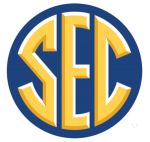 As college baseball fans know, it’s not just a football conference. The left coast doesn’t want to hear it, but the claims of the SEC’s dominance of college baseball are not greatly exaggerated. It is somewhat staggering to look at just how good the conference is when it comes to success at the College World Series. Start with the fact that all 11 players named to last year’s CWS All-Tournament Team were from the SEC, and throw-in the fact that with South Carolina’s back-to-back titles the last two years the conference has now won three straight national titles (LSU – 2009).
As college baseball fans know, it’s not just a football conference. The left coast doesn’t want to hear it, but the claims of the SEC’s dominance of college baseball are not greatly exaggerated. It is somewhat staggering to look at just how good the conference is when it comes to success at the College World Series. Start with the fact that all 11 players named to last year’s CWS All-Tournament Team were from the SEC, and throw-in the fact that with South Carolina’s back-to-back titles the last two years the conference has now won three straight national titles (LSU – 2009).
A total of 46 SEC teams have advanced to Omaha since 1990, with LSU at the head of the pack at 12 trips. Florida (6), South Carolina (5), Georgia (5), Mississippi State (4), Alabama (3), Tennessee (3), Auburn (2) and Arkansas (2) have each gone multiple times in the last two decades as well. The Bayou Bengals have won six of the conference’s nine national championships in that time, with Georgia (1990) and South Carolina (2010 & 2011) claiming the other three. South Carolina, Florida and Vanderbilt were the conference’s three CWS representatives in 2011, and all three were among the last four teams remaining at the event.
While last year was the SEC’s high water mark in that regard, the conference has failed to have at least one team among the last four alive in Omaha just five times since 1990.
The SEC just keeps getting tougher as well, with Dave Serrano leaving Cal State Fullerton to claim Tennessee as his new address. Serrano is one of 11 coaches to ever lead two programs to the College World Series (current Arkansas head coach Dave Van Horn and LSU’s Paul Mainieri are part of the club as well). Serrano took UC Irvine to the 2007 CWS and then led Fullerton to Omaha two years later.
CLICK HERE to listen to a preseason podcast with LSU head coach Paul Mainieri.
CLICK HERE to listen to a preseason podcast with Florida OF Preston Tucker.
Speaking Of New Addresses
Rick Vanderhook begins his first season as head coach at Cal State Fullerton in 2012, but he is anything but unfamiliar with the land of the Titans. Vanderhook, who spent the last three seasons as an assistant at UCLA, is just the fifth head coach in program history.
Vanderhook was an assistant coach for a total of 21 seasons in Fullerton under the previous four head coaches: Augie Garrido, Larry Cochell, George Horton, and Serrano, so don’t look for the Titans’ offensive philosophy to change. Vanderhook inherits a lot of returning experience offensively, but he’ll need to replace a ton of pitching, including Noe Ramirez and Tyler Pill are gone from the weekend rotation, and two-way player (and closer) Nick Ramirez.
Arizona State Is Out
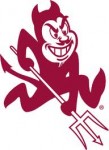 After sending six teams to the NCAA Tournament last year, one thing is certain in 2012 – if the Pac-12 gets six bids this year Arizona State will not be among them. After 12 straight NCAA appearances, the Sun Devils are banned from the 2012 NCAA postseason for infractions that were committed under former head coach Pat Murphy’s watch. ASU advanced to the College World Series in current head coach Tim Esmay’s first season in 2010 and fell to Texas in Super Regional play in Austin last year.
After sending six teams to the NCAA Tournament last year, one thing is certain in 2012 – if the Pac-12 gets six bids this year Arizona State will not be among them. After 12 straight NCAA appearances, the Sun Devils are banned from the 2012 NCAA postseason for infractions that were committed under former head coach Pat Murphy’s watch. ASU advanced to the College World Series in current head coach Tim Esmay’s first season in 2010 and fell to Texas in Super Regional play in Austin last year.
The argument can be made that most, if not all, of the players on this year’s roster were not even around when the actual infractions (lack of institutional control by the school) took place. That’s fair, but don’t forget that ASU was allowed to participate in last year’s NCAA Tournament while the appeals process took place. A higher percentage of those player, who played for Murphy, were there when the infractions took place.
Bottom line, it’s not a good situation for anyone and this year’s probation is step one in the moving on process.
Going Golden Bear Hunting
At this time last year Cal and head coach David Esqeur were just trying to keep the program alive. What a difference a year makes. After not only managing to Save Cal Baseball, Esquer managed to take his Golden Bears all the way to Omaha for the first time in nearly 20 years. Cal was the feel good story of 2011, but that CWS trip puts a bigger target on their backs this year.
“I hope we have that bull’s eye on our back,” Cal pitcher Justin Jones recently told College Baseball 360. “We’ll have to see how that plays out and see what happens I guess. We now know what it takes to get there to Omaha, and it’s really helped with the practice, the preparation and the hard work we all put in. Now we know that what was once kind of out of the reach is now in our reach. It’s in our eyesight. We feel like we can reach it every year now.”
Cal’s run to the CWS gives the Pac-12 six teams that have played in the CWS since 2004, along with Oregon State, Arizona State, UCLA, Stanford, and Arizona. The Cinderella run is the stuff of movies and, more importantly, what college athletics is all about. By the way, Jones says he would want Johnny Depp to play him if they were to make a movie.
CLICK HERE to listen to a preseason podcast with Cal’s Justin Jones.
Conference Confusion
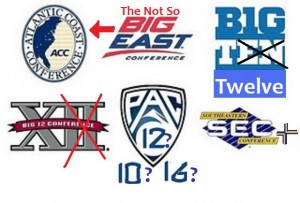 While baseball is an afterthought when it comes to all the shuffling in college conferences, the landscape of the sport will be affected greatly by all of the movement. Nowhere have things been more volatile than the Big 12 Conference, where who is staying and who is leaving have been the biggest questions over the last couple years.
While baseball is an afterthought when it comes to all the shuffling in college conferences, the landscape of the sport will be affected greatly by all of the movement. Nowhere have things been more volatile than the Big 12 Conference, where who is staying and who is leaving have been the biggest questions over the last couple years.
First, Nebraska bolted for the Big Ten and Colorado moved out west for Pac-10/12 expansion. The latter didn’t affect baseball, but the loss of the Cornhuskers means a three time College World Series team is gone to even farther northern climes.
While Utah does not immediately make the conference tougher on the diamond, Bill Kinneberg does bring a solid program with him to an already tough conference. The addition of Utah also means all 11 current Pac-12 baseball teams have made the NCAA Tournament field at least once since 2004. Kinneberg led the 2010 USA Collegiate National Team to a silver medal performance at the 2010 World University Championships. His Utes also finished their last season in the Mountain West Conference with 29 wins. Kinneberg’s roots in the Pac-10 run deep. He was a member of Arizona’s 1980 national championship team and was also an assistant coach on Arizona State’s 1993 and ’94 CWS squads.
Texas, Oklahoma and Oklahoma State flirted with the Pac-12, but ultimately stayed put. Meanwhile, Texas A&M and then Missouri decided it was time to jump for the SEC. Those two teams will play one last season in the Big 12 in 2012, but don’t expect any touchy-feely send-offs for them in their swan song season. Things could be as bitter as ever when the two rivals square-off for possibly the last time Apr. 27-29.
TCU and West Virginia will take their place. The Horned Frogs are a year removed from an Omaha trip, while the Mountaineers – a team that has traditionally been long on offense but pitching thin – have not been to the NCAA Tournament since 1996. What it all means the immediate future is nine baseball teams competing in the Big 12 in 2012.
Other conferences will see more shuffling as well. Hawaii will come aboard as a Big West member for the 2013 season, while San Diego State joins-up in 2014(though SDSU football is Big East bound) . Cal State Bakersfield and Texas State will join the WAC, Memphis, Houston and Central Florida are leaving Conference USA for the Big East, Fresno State is leaving the WAC for the Mountain West, and of course the Mountain West and Conference USA just announced plans to merge. Former DI Independent Dallas Baptist, which advanced to the program’s first Super Regional last year, is playing in the Missouri Valley Conference this year, but will head to the WAC next year.
It’s not confusing at all…
Is Virginia here to stay?
Brian O’Connor has led his Cavaliers to the College World Series in two of the last three years, but the challenge to get there again will be even greater in the near future. O’Connor’s recruiting has been nothing short of phenomenal since taking over the program in 2004, but arguably his biggest recruit – Danny Hultzen – is now gone. Hultzen was a freshman on UVA’a 2009 CWS squad and ended his career with a school record 32 wins before being the second overall pick (Seattle Mariners) in the 2011 MLB Draft. While he is the biggest man to replace, there are other holes to fill as well.”
“From a pitching standpoint off last year’s team, we lost 70 percent of our innings,” O’Connor told CB360 of his turnover. “We lost three guys that threw over 100 innings and another pitcher that threw over 75 innings.”
Branden Kline is the biggest name back from the ’11 CWS squad. He shined last year with 18 saves, while moving from midweek starter to closer. O’Connor told College Baseball 360 that Kline will start the new season in the weekend rotation, but could return to the closer role if other starters emerge.
Pitching isn’t the only pressing need O’Connor has entering 2012. His top four statistical hitters from last year are departed as well, but he said he is ready for the new challenge.
“As a coach, you can look at it in one of two ways. You can be concerned about that or you can look forward to it.”
O’Connor added that he had fun this past fall seeing a lot of new faces in new places.
“I love that challenge as a coach of trying to get those young people to the next level of being able to perform every day and be somebody that can really be counted on at a high level of college baseball”
Consistency in the coaching staff has been a key to Virginia’s success as well. Associate head coach, Kevin McMullen, and pitching coach, Karl Kuhn, are entering their ninth year with O’Connor on the Cavalier staff.
CLICK HERE to listen to a preseason podcast with Brian O’Connor.
O’Brien Stepping-up To The Big Stage
After three great seasons at Bethune-Cookman, Peter O’Brien should provide instant impact after transferring to Miami for his final year of eligibility. The NCAA ruled recently that O’Brien will be allowed to play immediately. The catcher batted .304 with 14 home runs and 69 RBIs in 2011.
The 6’5, 225 lb. senior was the MEAC Player of the Year in 2010 and went on to play for the USA Collegiate National Team that summer. O’Brien was selected in the third round of the 2011 MLB Draft, but turned down the chance to turn pro for a year in Coral Gables and the ACC.


